When to Start Planting Cabbage Outside?
How large should the cabbage plants be when we put them outside? Read everything you need to know about growing and transplanting cabbage below!
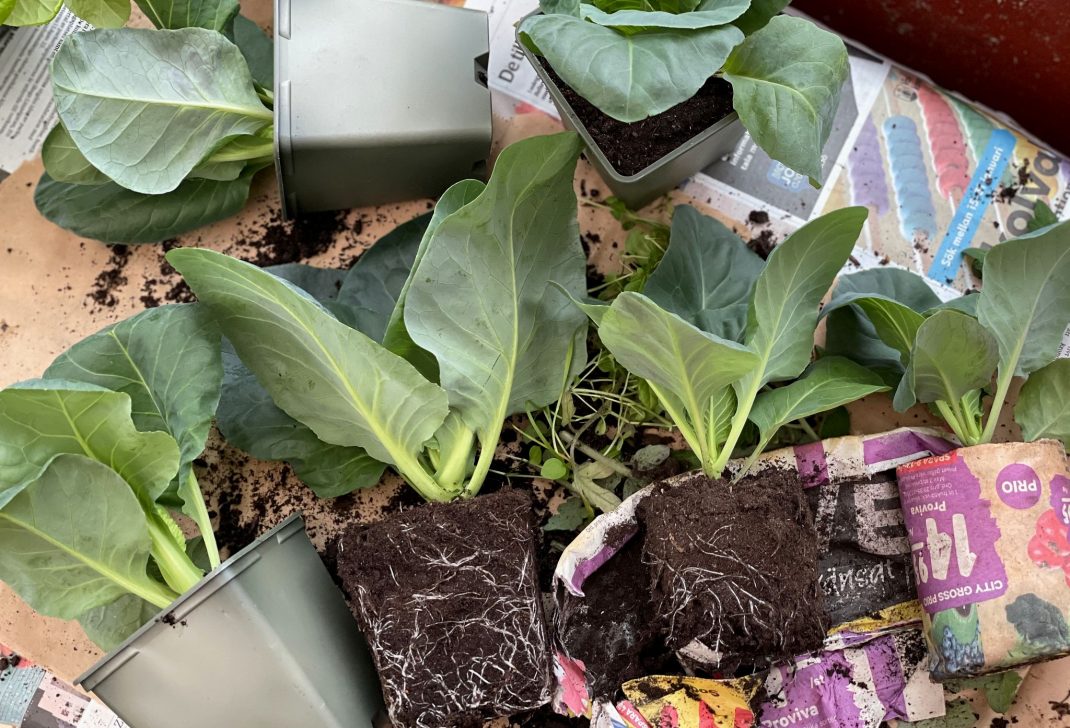
Here are a few of the cabbage plants I grew this winter! It's time to start planting cabbage outside.
Seeing my beautiful cabbage plants outside on a crisp winter day gives me such a rush! Few things in the garden makes me as happy as cabbage. And when the plants look this nice, I start to dream about spring and new beginnings. I grew these particular plants for a photo shoot, and it's still a bit too cold and dark to take them outside. There are a few things you should know about pre-cultivating and then planting cabbage outside.
Read more: 10 Cabbage varieties and how to use them
The main thing to think about is to pre-cultivate large and healthy plants to take outside. Check out my video series about cabbage from sowing to harvest below for inspiration and more info on how to transplant cabbage:
Plant Cabbage Outside
A lot of people ask me how I manage to grow such nice and healthy-looking cabbages. Well, I've really been digging into this subject these past few years. Two big keys to my success are: pre-cultivation and adapting to the conditions of my garden.
I often grow my cabbage in mulched beds here in my kitchen garden. Since I cover them with a quite thick layer of mulch, it's easier for me to use larger plants. This keeps them from drowning in the layers.
If you on the other hand decide to plant your cabbages in bare soil, you can absolutely go for smaller plants. You can even do it in the open field. This can in my opinion be a bit complicated though. The area is going to get very large since the cabbage seeds need a lot of space to spread out and prefer sparse rows.

This is what cabbage should look like! This picture was taken eight weeks after sowing.
Large Plants
The best thing about planting larger cabbage plants is that they're more resilient to pests. A small plant can get demolished by slugs in an hour, but you have a much better chance of recovery with larger plants.
Another great point about planting cabbage outside after cultivating indoors is that you can start harvesting early. The cabbages you start to grow indoors in a controlled environment (like a greenhouse) usually get pampered and have a head start when you put them outside.
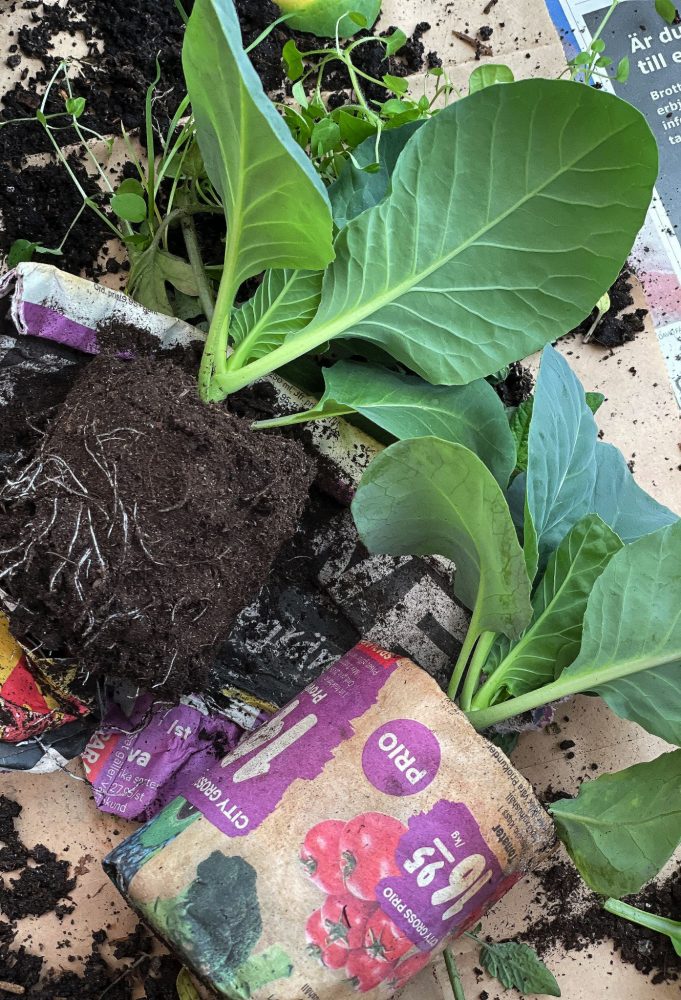
I put some of my plants in pots made of newspapers. The soil is a lot drier here than in plastic pots. The moist evaporates through the paper, which is why it's difficult to succeed with these paper pots.
Eight Weeks
I usually try to sow my cabbage eight weeks before I plan on taking them outside. Here we have one example of how it might work:
- March 15 - sow in a trough or plug tray
- March 30 - transplant to the first pot, around 2.7 inches
- April 15 - transplant to a larger pot, around 4.3 inches
- May 15 - plant the cabbage outside
You need to transplant your cabbage to new pots twice during an eight-week period indoors or in a greenhouse. Of course, it's possible to put them outside already at the first transplant but then the plants will be quite small. I do this sometimes, depending on where I plan on putting the cabbages and what the slug situation looks like of course. The reason why you need to transplant cabbage is that it grows very quickly and on top of that needs a lot of nutrients as it grows. The nutrients in the little pot simply run out and the pot becomes too small for the plant too.
We don't really need to start fertilizing the cabbage until you transplant it to the largest pot. Good planting soil should contain enough nutrients for the first 2-4 weeks. If you feel like you still need to fertilize, I recommend using one part urine and twenty parts water as a simple solution. Cabbage needs nitrogen and the diluted urine contains lots of it.
Read more: Fertilize with diluted urine indoors
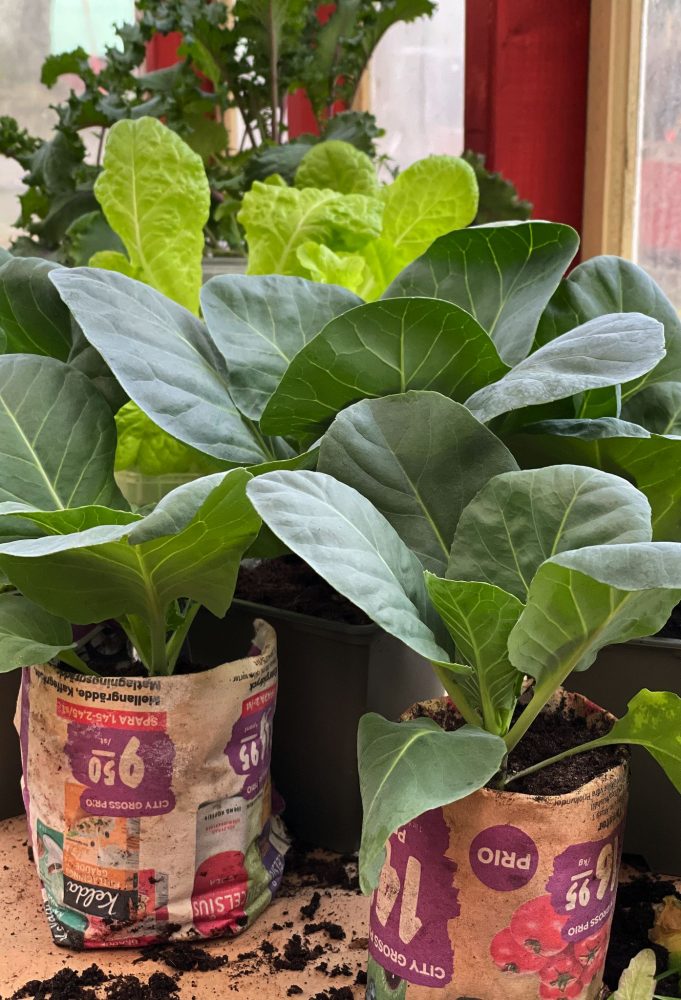
My early cabbage in the greenhouse in January. These plants usually stay underneath a grow light in my little cottage. It's time to transplant cabbage soon though!
When the cabbages reach this size, it's time to start planting them outside! I always try to keep the cabbages I plan on growing early in my greenhouse around this size. This means a lot of transplanting and keeping track of which plant goes where of course. But it's worth it!
I don't know what the future holds for these particular plants. I need to transplant them again very soon before they start taking up too much space. But for now, I try to keep them inside for as long as I can. Then it's time for the greenhouse or a hotbed. I'm just going to wing it! I also have a few new plants in my greenhouse. I'm going to use these for the very earliest projects in the greenhouse soon. This process has been such great therapy for me during winter. So, it doesn't really matter if I get fullgrown cabbage heads or just a smaller version this time.
Read more: 10 Cabbage varieties and how to use them
More Inspiration
I know that a lot of you who read my blog grow cabbage in your kitchen gardens. But some are beginners too, and completely new to this lovely plant. If this is you, you have so much to look forward to! I also wanted to mention that you can find even more garden-related inspiration as well as lifestyle videos on my YouTube channel. You can subscribe for free by following the link below:
Sara's Kitchen Garden on YouTube
Good luck planting cabbage outside!
/Sara Bäckmo
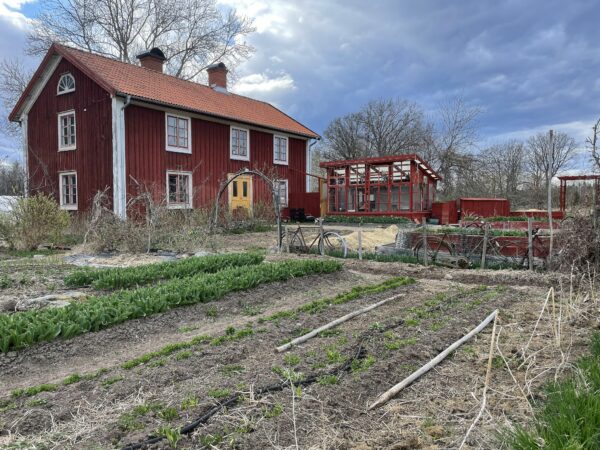
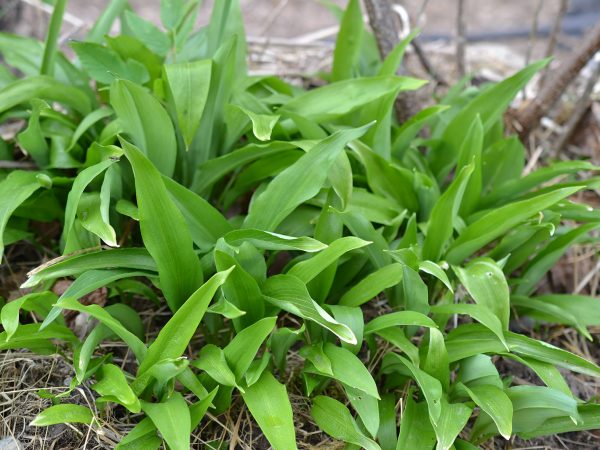
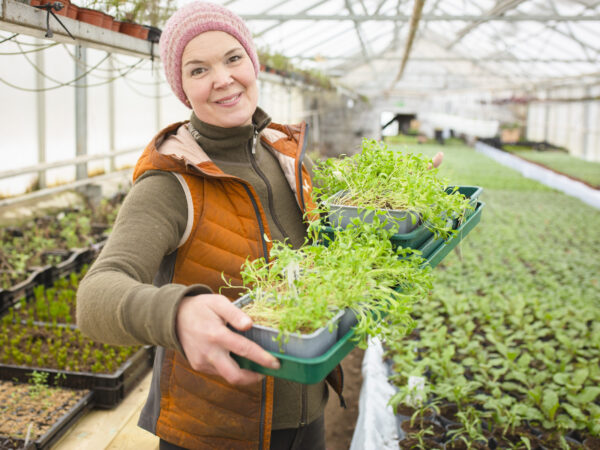
Leave a Reply